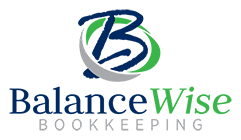Online Payroll Conversion
Conversion from your current payroll system to your new choice of payroll software.
This is a one-time fee & includes the following:
- Set up of Payroll Items
- Set up of Employee Information
- Enter PTO balances
Have you ever wondered if switching payroll providers would be more effort than its worth? Will there be a disruption to payroll processing? Will the year-to-date figures be correct? The answer to these questions and the ones that follow will tell you whether or not you could use some help with your online payroll conversion.
How many days will a conversion take? When is the best time to switch? Will the taxes calculate correctly? Hesitation is common when considering a change in payroll companies. Switching providers can feel overwhelming if you have never done it before. Converting mid-year can be especially daunting, especially with everyone counting on you for their paychecks not being delayed.
Companies without formal, clear, and precise policies in place for online payroll conversion that prescribe when to submit a termination notice to existing provider to allow adequate time for the transition, how to negotiate any restrictions, clauses, cancellation terms in your current contract, and current payroll schedule can inadvertently end up without important documents and relevant payroll records needed to migrate. Unintended consequences can occur with poor enforcement of such policies, such as penalties for unpaid tax liabilities, or lost trust from your employees.
At a minimum you will need to compile the following for the conversion:
General company information
- Business name
- Trade name, if applicable
- Mailing address
- Phone number
- Filing address, if different from mailing address
Federal Tax setup information
- Employer identification number (EIN)
- Tax deposit schedule (semi-weekly or monthly).
Note: If you have never run payroll before you will be on a monthly schedule.
State Tax setup information
Varies by state. Typically you will need to:
- Register your business with the Secretary of State in each state you have employees
- Register with each State’s Unemployment Insurance Agency.
Employee information
- Name
- Address
- Date of birth
- Social security number
- Compensation
- Email address (for access to paystubs)
- Hire date
Additional information
- W-4 form (with instructions https://www.irs.gov/pub/irs-pdf/fw4.pdf)
- Bank account number and routing number for direct deposit
- Employer Eligibility (Form I-9) https://www.uscis.gov/system/files_force/files/form/i-9-paper-version.pdf to be retained by employer
No company can afford to waste their financial resources. There are strategies for a seamless conversion that will save you time and money, whether your company has employee garnishments, non-cash fringe benefits, or complex vacation policies.
- Work with a provider who understands your unique challenges
- Upload year-to-date history so W-2s are complete
- Ensure everything is set up correctly and validate data accuracy after conversion
- Utilize an external 3rd party provider to stay tax compliant
- Integrate with accounting system and attach a copy of payroll journals to the transactions for reference
The time it takes to implement depends on whether other applications like time & expense tracking will be feeding information to the payroll system and the size of your data file.
For a smooth changeover, convert at the beginning of a quarter to reduce the risk of missed or lost information; or better yet, at the start of a new calendar year, which eliminates that risk. These days, electronic implementation processors usually help ensure a seamless transfer of data and eliminate manual entries. Mid-period conversions increase the likelihood for errors and a longer conversion process.
Established practices on payroll conversion can increase productivity, reduce the potential for errors, and drive down costs. If your company lacks them, outsource online payroll conversion to a company that has them.
